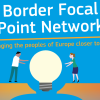What?
Latvia and Lithuania share groundwater resources across their borders which, according to European Directive 2006/118/EC, require an institutional cooperation agreement in order to monitor hydrogeological conditions in the long-term. In this context, the Latvian Environment, Geology and Meteorology Centre and the Lithuanian Geological Survey channelled their strengths to standardise methods for analysing the chemical composition of groundwater and allow for qualitative data comparisons. Specifically, the main tasks of the project are:
- To strengthen the cooperation between the Lithuanian Geological Survey and the Latvian Environment, Geology and Meteorology Centre in the field of groundwater management
- To exchange data in order to create a unified knowledge base;
- To develop an initial characterisation and assessment of groundwater resources in the Latvian-Lithuanian cross-border area;
- To develop recommendations for cross-border groundwater monitoring, laboratory methods, and a long-term monitoring strategy.
Where?
The groundwater bodies are mainly linked to the three large common river basin districts of Venta, Lielupe and Daugava.
How?
Cooperation between the two institutes was also supported by the b-solutions initiative of the European Union) which resulted in the creation of a common foundation to facilitate the cross-border management plans in the long-term. In particular, the steps followed to achieve this were:
- Developing maps of areas affected by the karst process to describe common geographic characteristics in the cross-border area;
- Drafting a local stratigraphic unit comparison, the development of a geological cross-section and an aquifer prevalence map to merge data to delineate cross-border groundwater body groups;
- Creating a database and platform for cross-border monitoring data;
- Agreeing on groundwater body delineation principles in both countries and on data for exchange processes to interpret hydrogeological conditions.
Results:
The Latvian Environment, Geology and Meteorology Centre and the Lithuanian Geological Survey have succeeded in setting up a unified database between both Member States, harnessing the agreement of stakeholders in groundwater boundaries and harmonising data and methods. In this way, data misinterpretation can be avoided, and information is accessible and understandable to stakeholders from both countries. Furthermore, the results obtained will feed into the groundwater section of the river basin management plans for the next 5-year period (2022-2027). The acquired knowledge base, the developed strategy for further groundwater management in the Latvian-Lithuanian cross-border area and the development of a joint long-term monitoring programme will facilitate further cooperation between the two institutes.
Additional information available at:
- Log in to post comments

